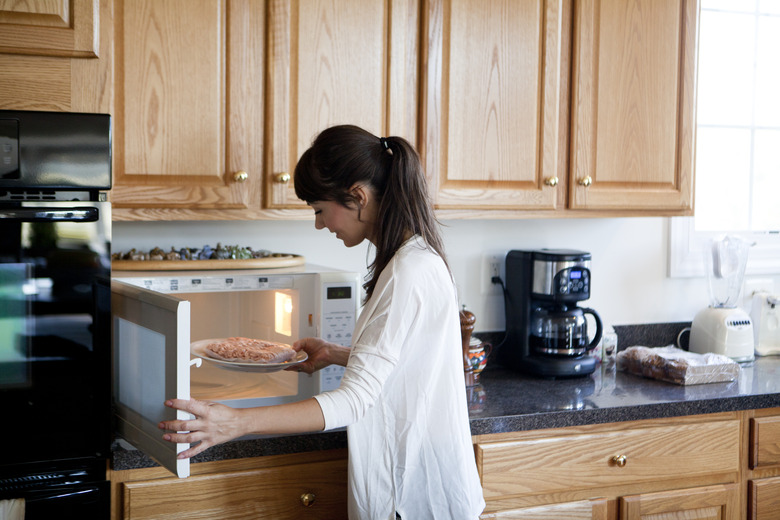Is Melamine Safe For The Microwave?
Melamine, a type of plastic resin, serves as a lightweight and durable alternative to fragile dishware. Unlike glass or porcelain dishes, however, melamine plates shouldn't be used in the microwave. A microwave could damage the melamine or cause chemicals to leach into the food.
Melamine Composition and History
Melamine Composition and History
Melamine is a chemical compound used for many purposes, including the production of Formica, laminate flooring and even sponge-style foam erasers used for cleaning. When it comes to dinnerware, melamine is mixed with formaldehyde to create a resin that's easily molded into plates, bowls or cups.
Melamine kitchenware first appeared on the market in the 1940s as an affordable alternative to heavy crockery. Kitchenware under the "Melmac" brand, popular in the 1950s, is still collected today, largely for the brand's vast array of pastel colors and nostalgia. Many companies offer their own versions of melamine kitchenware, even today.
Microwave Safe Plastic Plates
Microwave Safe Plastic Plates
When it comes to plastic plates, some are microwave-safe but many are not, especially if they're vintage. Flip the plate over and look for embossed words or symbols. If the plate is safe to use in the microwave, it will say "microwave safe" on it or show a symbol featuring parallel rows of squiggly lines. The symbol for microwave-safe dishes varies from one manufacturer to another, but the squiggly lines are always part of the icon.
Other plastics, such as most takeout containers, yogurt tubs, water bottles and condiment containers, aren't meant for use in a microwave. Plastic wrap also isn't a good idea in the microwave. If you need to cover your food to prevent it from splattering, loosely place a paper towel over the plate instead.
Melamine Microwave Dangers
Melamine Microwave Dangers
While the chemical composition of melamine makes it fire- and heat-resistant, it's not meant to be heated to high temperatures, especially while containing foods or beverages. Putting melamine in the microwave could result in chemicals transferring from the plate into the food; the more acidic the food and the higher the temperature, the greater the amount of melamine that transfers into the food.
While melamine in very small quantities may not be cause for concern, regularly eating foods contaminated with melamine increases the chances of kidney stones, kidney failure, high blood pressure or kidney infection.
Alternatives to Melamine Dinnerware
Alternatives to Melamine Dinnerware
Instead of using any type of melamine or plastic in the microwave, consider switching to bowls and plates made of ceramic or glass. If you enjoy serving foods on melamine, save the dishes for sandwiches or for serving foods, rather than reheating them. When buying new kitchenware specifically for the microwave, look for microwave-safe symbols or wording, either on the bottom of each item or on the packaging if buying a set.
Even plastic that has a microwave-safe symbol on it could become problematic over time. The more the plastic has been used and scratched, the more likely it is to leak harmful chemicals into the food. Either discard older microwave-safe plastics or reuse them for other purposes, such as serving cold foods. Old plastic containers come in handy for storing craft and workbench supplies or for organizing small, loose items in desk drawers.
References
- Nisbets: What is Melamine Crockery?
- Food and Drug Administration: Melamine in Tableware Questions and Answers
- Harvard Medical School: Microwaving Food in Plastic: Safe or Not?
- Plastics Industry Association: Food Container Symbols 101
- The Chemical Company: Melamine
- The Atlantic: Better Keep Plastic Out of the Microwave
